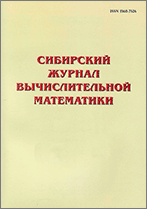|
This article is cited in 2 scientific papers (total in 2 papers)
The simulation of nonlinear oscillations in a micro clock generator
S. I. Fadeevab, V. V. Kogaiab
a Sobolev Institute of Mathematics, Siberian Branch, Russian Academy of Sciences,
pr. Akad. Koptyuga 4, Novosibirsk, 630090 Russia
b Novosibirsk State University, ul. Pirogova 1, Novosibirsk, 630090 Russia
Abstract:
In this paper, we consider a mathematical model of a new type of a microgenerator, based on generating the oscillations of a mobile electrode in a micro-gap due to electrostatic forces. The principle of operation of the generator is analogous to the well-known theory of the clock-escapement mechanism, with the difference that in the equation of motion the form of the right-hand side corresponds to the electrostatic nature of the impulse action. The numerical analysis shows that the bounded oscillations with an increase in time tend towards a stable limit cycle in the phase plane and, thereby, the emerging oscillations are stable with respect to external perturbations. In studying periodic oscillations, depending on the parameters of a model, we use the solution of the boundary value problem for the equation with a discontinuous right-hand side, transformed to a form allowing the application of the numerical continuation method. In this way, the area in the plane of the model parameters is defined, in which stable limit cycles exist.
Key words:
mathematical model, microgenerator, Cauchy problem, boundary value problem, periodic oscillations, limit cycle, phase plane, continuation of the solution with respect to the parameter.
Received: 28.09.2018
Revised: 20.11.2018
Accepted: 25.07.2019
Citation:
S. I. Fadeev, V. V. Kogai, “The simulation of nonlinear oscillations in a micro clock generator”, Sib. Zh. Vychisl. Mat., 22:4 (2019), 499–511; Num. Anal. Appl., 12:4 (2019), 407–417
Linking options:
https://www.mathnet.ru/eng/sjvm728 https://www.mathnet.ru/eng/sjvm/v22/i4/p499
|

| Statistics & downloads: |
| Abstract page: | 186 | | Full-text PDF : | 50 | | References: | 26 | | First page: | 13 |
|




 Contact us:
Contact us: Terms of Use
Terms of Use
 Registration to the website
Registration to the website Logotypes
Logotypes








 Citation in format
Citation in format 
